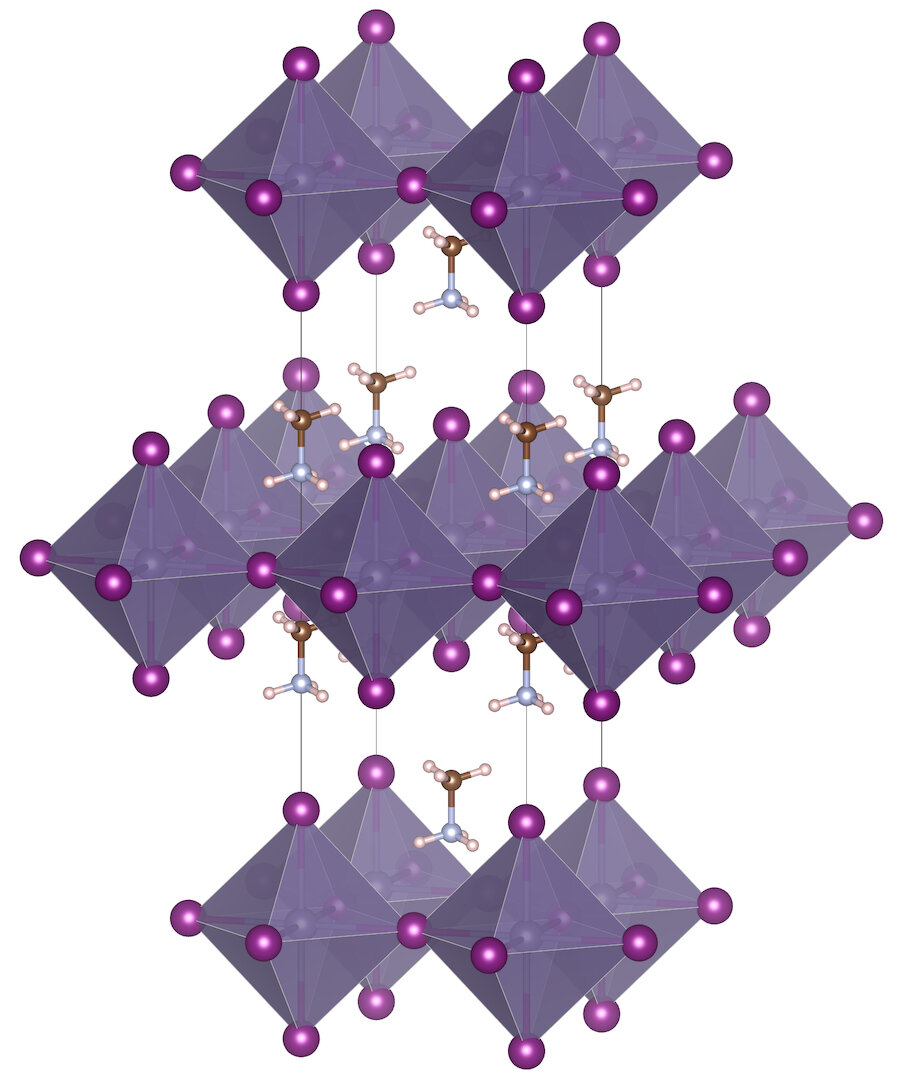Using an advanced computational method, scientists at the University of California San Diego have compiled a shortlist of 13 new materials that could be used to create low cost, high efficiency solar cells in the future.
Aware of the great potential of perovskites to solar, the researchers were seeking compounds with similar structures – to ensure the same sort of efficiency potential – without the stability issues that have plagued perovskite use in solar cells, and which would not involve toxic lead in their production.
In seeking alternatives to lead based perovskites, the team developed a method for the computational modelling of alternative materials that is described in the paper High throughput computational design of organic-inorganic hybrid halide semiconductors beyond perovskites for optoelectronics, published in the Royal Society of Chemistry’s Energy & Environmental Science journal.
The researchers first used quantum materials databases AFLOW and The Materials Project to develop 24 prototype structures to use as templates for the materials, and built a list of 4,507 hypothetical hybrid halide compounds. Those were quickly whittled down using data mining and screening algorithms to leave 13 candidates for solar cell application, as well as 23 potential LED materials.
The researchers hope their work will inspire a wave of experimentation to validate the theoretical performance of the differing candidates. “We are looking past perovskite structures to find a new space to design hybrid semiconductor materials for optoelectronics,” said Kesong Yang, a nanoengineering professor at UC San Diego’s Jacobs School of Engineering. “A high-throughput study of organic-inorganic hybrid materials is not trivial.”
Getting the lead out
Recent weeks have brought several major studies focused on the development of lead free solar cells. Scientists at Russia’s Skolkovo Institute of Science and Technology looked beyond the perovskite structure to create solar cells based on antimony and bismuth in combination with iodine.
In their paper, Polymeric iodobismuthates {[Bi3I10]} and {[BiI4]} with N-heterocyclic cations: promising perovskite-like photoactive materials for electronic devices, published in the Royal Chemistry Society’s Journal of Materials Chemistry A, the researchers claimed to have designed a fundamentally new family of solar cell materials based on the perovskite-like complex antimony bromide. They claim the materials have already achieved record efficiencies for cells based on antimony or bismuth halides.
This content is protected by copyright and may not be reused. If you want to cooperate with us and would like to reuse some of our content, please contact: editors@pv-magazine.com.




3 comments
By submitting this form you agree to pv magazine using your data for the purposes of publishing your comment.
Your personal data will only be disclosed or otherwise transmitted to third parties for the purposes of spam filtering or if this is necessary for technical maintenance of the website. Any other transfer to third parties will not take place unless this is justified on the basis of applicable data protection regulations or if pv magazine is legally obliged to do so.
You may revoke this consent at any time with effect for the future, in which case your personal data will be deleted immediately. Otherwise, your data will be deleted if pv magazine has processed your request or the purpose of data storage is fulfilled.
Further information on data privacy can be found in our Data Protection Policy.